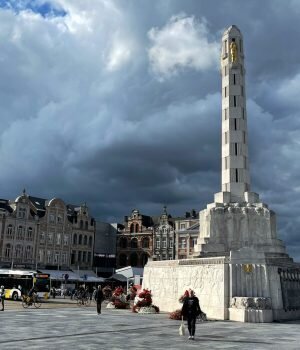Every economy naturally fluctuates through the periods of expansion and contraction.
Becoming an entrepreneur during an economic crisis
These are regular upward and downward movements in the growth of a country’s gross domestic product (GDP), income level, jobs, and spending.
Becoming an entrepreneur in a troubled economy requires a good understanding of the stages of an economic cycle.
When an economy is experiencing an expansionary period, jobs are being created, consumers are spending, and businesses are booming.
In a troubled economy, however, jobs are lost, consumers cut back on spending, and most businesses are troubled.
Becoming an entrepreneur in such an economy will serve as a growth engine for yourself and also for the economy as a whole.
In a working knowledge article “Creative Entrepreneurship in Downturn”, Chakravorti (2009), stated that many successful products, services, and pivotal ideas have launched during an economic lull.
It is important to note that turbulent times in any economy present some opportunities to be exploited.
“Business opportunities are like buses. There’s always another one coming” – Richard Branson
A good understanding of the stages of the economic cycle can provide valuable insights into how to make investment / entrepreneurial decisions.
This will provide insights into how to identify and exploit these opportunities.
5 STAGES OF THE ECONOMIC CYCLE
1. Boom
A boom occurs when there is a surge in gross domestic product, making it rise at a faster rate than the normal growth trend.
More jobs are created causing unemployment to fall, real wages to be high, income levels to rise, and consumption spending to be high.
A boom is a period of expansion with the rate of growth rising at a faster rate.
2. Early recession /slowdown
During early recession or slowdown, the rate of growth slows down. The GDP is growing at slower than the normal growth rate, interest rates are rising, and consumer expectations begin to fall.
3. Full recession
A full recession is a contraction period, characterised by fall in the level of real GDP for two consecutive quarters.
Growth under full recession is negative, and all economic activities witness a significant decline in all areas of the economy.
Such decline includes a high unemployment rate, a decline in consumer spending, declining profits and high business failures.
4. Depression
Depression is also known as a slump. It occurs when the full recession is prolonged beyond two quarters, causing real GDP to decline by more than 10 percent from the bottom of the previous cycle (trough).
5. Recovery
As the name implies, in the recovery stage, the economy is beginning to pick up from the trough.
The interest rate is at its lowest and consumer expectation and spending is beginning to rise. A rise in government spending is also witnessed in the recovery stage.
A rise in government spending is also witnessed in the recovery stage.
Becoming an entrepreneur in a troubled economy
A troubled economy is an economy in the early recession, full recession, or depression stages of the economic cycle.
In either of these stages, the economy is in trouble and consumer expectation is low.
While many businesses may downsize or shut down, this may only be a short term fix and does not position the business for long-term success.
Becoming an entrepreneur at such times may be seen by others as a not so good idea.
However, those that are able to identify and exploit innovative opportunities during troubled times will thrive and achieve growth in the future.
Here are Important questions to ask as you make entrepreneurial decisions in a troubled economy:
How do the consumers behave as the economy moves?
This question is very important as you begin to think of what to invest in or what business to embark on.
Since the economy naturally fluctuates across the different stages of the economic cycle, consumer expectations also fluctuate with it.
However, some sectors of the economy or some products or services specifically move with the economy, while some do not.
It becomes important to understand how a product moves with the economy to access its viability in a troubled economy.
Here are some examples:
Luxury Products
Think of yourself as a consumer. Are you likely to spend on luxury products or services when your income is declining?
When you are at a high risk of losing your job or maybe when you are already unemployed? Or when the prices of goods and services are skyrocketing?
Luxury goods are goods the demand of which increases as income rises such as diamonds, high-end designer brands, nice vacations, whole or organic foods etc.
The answer is probably “no” for such goods and services. That is the case with the majority of consumers in a troubled economy.
This means that:
investing in luxury products or services may not be such a good idea in a troubled economy because consumers will not desire them during shortage of money.
Necessity goods
Necessities are goods that consumers cannot live without, and will buy regardless of changes in their income levels. Examples of such products include food, shelter, clothing, water, haircut.
The demand for necessities does not change as the economy declines, or as their income levels change.
Back to the basic question, consumers are more likely to continue spending on the necessity goods and services even when their income is falling because they cannot do without them.
In a troubled economy, therefore, necessity goods present great entrepreneurial opportunities
What value can you add or create?
When you are able to identify and create value for consumers, becoming an entrepreneur in a troubled economy can be an engine of growth.
During such period, consumers shop for value and want more “bang for their buck”.
Whether you are already in business or considering becoming an entrepreneur in a troubled economy, creating value for consumers is critical for success. So take a leap, create a product or offer a service that adds value to your customers and keeps them coming back.
How can you efficiently capture and utilise the limited resources?
High-interest rates, declining growth, failing businesses, high inflation rate and more characterise troubled economies. This means that there are limited resources available for investment.
It is important to ask yourself how you can efficiently capture and utilize these limited resources. Think about the product offerings, the business processes, and the markets.
Your ability to harness these, succeed and thrive under shortage is a powerful engine of growth.
Conclusion
There are opportunities in every troubled economy, you just have to identify and efficiently exploit them.
In fact, most entrepreneurs who took the leap to create and add value to consumers during economic downturn thrive and achieve growth in the long run.
Use the key questions above to guide your entrepreneurial decisions, and thrive.
If you liked the article, or have some thoughts you want to share with us, leave them in the comments below. We love comments!
For more business and career tips, check our entrepreneurship section and subscribe to our weekly newsletters.






